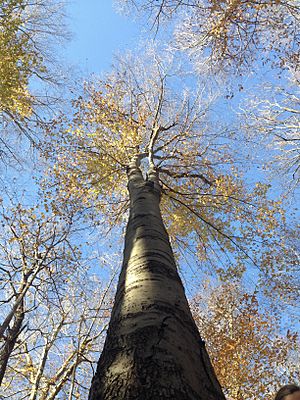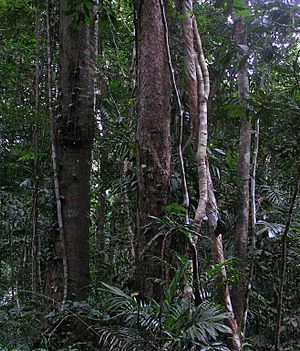Climax vegetation facts for kids

In the study of ecology, a climax community is a term used to describe a group of living things. This includes plants, animals, and fungi. They live together in a specific area. Over a long time, these communities reach a very stable state. This happens through a process called ecological succession. It means how different groups of plants and animals change an area over time.
Scientists once believed this stable state happened because the species in a climax community were perfectly suited to the average weather and conditions of that place. This idea can also be used when talking about how soil develops.
The idea of a single "climatic climax" came from a scientist named Frederic Clements. He developed this idea in the early 1900s. It describes a community that is mainly shaped by the climate of its region. Another scientist, Henry Cowles, first wrote about how communities change towards a stable point in 1899. But it was Clements who first used the word "climax" for this final, ideal stage of change.
Images for kids
-
A climax community in Tongass National Forest, Alaska. This forest has many Sitka spruce and western hemlock trees. Floods, landslides, and salt spray can disturb small parts of the forest. But overall, it stays very stable.
See also
 In Spanish: Comunidad clímax para niños
In Spanish: Comunidad clímax para niños



